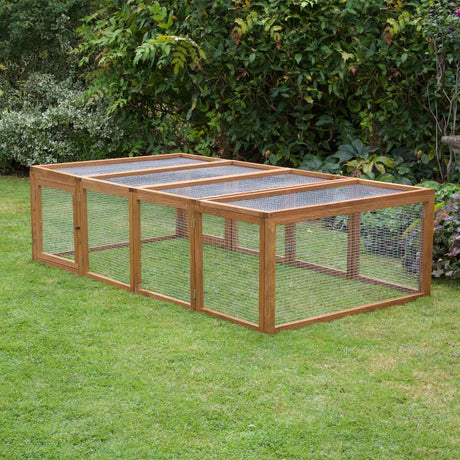British blue tits eat a wide range of foods in the wild including caterpillars, beetles. Aphids and larvae of flies. They also enjoy fruit, seeds and berries.
If you want to feed bluetits in your garden choose fat balls, peanuts and sunflower seeds.
One of our best-loved garden birds, blue tits are a pleasure to have around.
Their stunning colouring, cheerful song and cheeky antics in the garden make them great entertainers.
We still have a large population of bluetits in the UK. So it shouldn’t be difficult to attract these lovely little birds to your garden, and providing them with the right food is a great way to start.
In this article we are going to look at:
- what blue tits eat in the wild.
- what to feed blue tits in your garden
- Feeding throughout the year.
Natural Diet
Blue tits used to get a bad reputation for attacking apples and pears in the autumn. They do love a bit of fruit. But the damage they do to fruit crops is far outweighed by their good work in eating up all sorts of insects and garden pests.
Blue tits eat:
- caterpillars.
- beetles.
- small insects.
- aphids.
- millipedes.
- larvae of flies and other insects.
They will also eat grains and seeds and nuts from trees like beech and hawthorn.
What to Feed Blue Tits
Blue tits enjoy a wide range of natural food. But they will also much appreciate being offered extra by you.
They will eat most kinds of bird feed and there are 3 particular favourites.
- Fat Ball and Suet Products. Fat Balls and other suet products offer an easily accessible source of energy and will be especially welcome in the cold weather when tits need to keep warm.
- Peanuts. Peanuts are a favourite food and will be readily taken at any time of year. We need to be careful about offering these around nesting time though.
- Black Sunflower Seeds. Black sunflower seeds are another high-protein favourite. Tits appear to be having great fun chiselling off the husks to eat the hearts.
JTIwJTNDc3BhbiUyMGNsYXNzJTNEJTIyY2xlcmslMjIlMjBkYXRhLXRlbXBsYXRlJTNEJTIyJTQwd2lsZC1iaXJkLWJsb2ctYmlyZC1mb29kLXJlY29tbWVuZGF0aW9ucyUyMiUzRSUzQyUyRnNwYW4lM0UlMjA=
What Feeder to Use for Blue Tits
A wire or mesh feeder is the best option for blue tits.
Not only does it make the best container for things like fat balls and peanuts, but it also offers plenty of opportunity for blue tit acrobatics. Tits like to attack their food from all sorts of angles, even hanging pride down. A wire or mesh feeder gives them plenty of scopes to do this.
Feeding Blue Tits Through the Year
Blue tits will appreciate extra food throughout the year but there are a couple of feeding tips to bear in mind at different times of the year.
Winter Feeding
British blue tits do not migrate, they are with us all year round. In the winter their natural sources of food can become scarce, so it's important to carry on feeding.
Fat balls and suet products are especially important at this time of year as the ready energy they provide can quickly be turned in to heat.
And don’t forget the water in the winter - pop a bit of boiling water from the kettle into your birdbath to break up any ice.
April and May
This is a very busy time for blue tits. It’s the mating season. They will be building nests and laying eggs.
Blue tits lay one of the biggest clutches of eggs of all garden birds. b8-12 eggs are common with clutches of up to 17 on record.
Females lay their eggs one a day, for as long as it takes. It’s a marathon mission and blue tits need to be in top condition to get through it.
So any food you can provide at this time of year will be gratefully received.
June and July
In June and July, blue tit chicks are hatching out and being fed in the nest by the parents.
Blue tit chicks love caterpillars and each chick can eat up to 100 a day. So with an average of 10 chicks in the nest parents will need to deliver 1000 in any 24 hours.
This is a pretty exhausting routine and if food is scarce they will concentrate on feeding the chicks and may go hungry themselves.
So food at this time of year is important but you must be careful what you provide.
Blue tits will continue to take peanuts if they are offered. But if they take these to chicks they are far too big for the chicks to swallow and can end up choking them.
If you feed peanuts at this time of year you need to buy special peanut kibble or break up the peanuts in your food processor.
August to October
There is plenty of natural food for blue tits at this time of year with fruit and berries in abundance on the trees.
But still, it's good to give them extra. This is an especially important time of year for young birds that have hatched earlier in the year. They need to get up to full adult weight before the cold weather sets in and food becomes scarce.
So any extra food you offer will still be very welcome.
Conclusion
Blue tits have a varied natural diet and will always benefit from additional food we offer them in our gardens.
If you’d like to find out more about our native birds and how we can help them visit the RSPB website.
And if you have a question or suggestion you would like to share we’d love to hear from you; leave us a comment below.
JTIwJTNDc3BhbiUyMGNsYXNzJTNEJTIyY2xlcmslMjIlMjBkYXRhLXRlbXBsYXRlJTNEJTIyJTQwbGFuZGluZy1wYWdlLWJsb2clMjIlM0UlM0MlMkZzcGFuJTNFJTIw JTNDc2NyaXB0JTIwdHlwZSUzRCUyMnRleHQlMkZqYXZhc2NyaXB0JTIyJTIwc3JjJTNEJTIyJTJGJTJGZG93bmxvYWRzLm1haWxjaGltcC5jb20lMkZqcyUyRnNpZ251cC1mb3JtcyUyRnBvcHVwJTJGdW5pcXVlLW1ldGhvZHMlMkZlbWJlZC5qcyUyMiUyMGRhdGEtZG9qby1jb25maWclM0QlMjJ1c2VQbGFpbkpzb24lM0ElMjB0cnVlJTJDJTIwaXNEZWJ1ZyUzQSUyMGZhbHNlJTIyJTNFJTNDJTJGc2NyaXB0JTNFJTNDc2NyaXB0JTIwdHlwZSUzRCUyMnRleHQlMkZqYXZhc2NyaXB0JTIyJTNFd2luZG93LmRvam9SZXF1aXJlJTI4JTVCJTIybW9qbyUyRnNpZ251cC1mb3JtcyUyRkxvYWRlciUyMiU1RCUyQyUyMGZ1bmN0aW9uJTI4TCUyOSUyMCU3QiUyMEwuc3RhcnQlMjglN0IlMjJiYXNlVXJsJTIyJTNBJTIybWMudXM1Lmxpc3QtbWFuYWdlLmNvbSUyMiUyQyUyMnV1aWQlMjIlM0ElMjIwZjE0MzI1NWQwYWRlOWZkOTQ3OTI3YzkyJTIyJTJDJTIybGlkJTIyJTNBJTIyY2YwMDUzNmRjNyUyMiUyQyUyMnVuaXF1ZU1ldGhvZHMlMjIlM0F0cnVlJTdEJTI5JTIwJTdEJTI5JTNDJTJGc2NyaXB0JTNF







